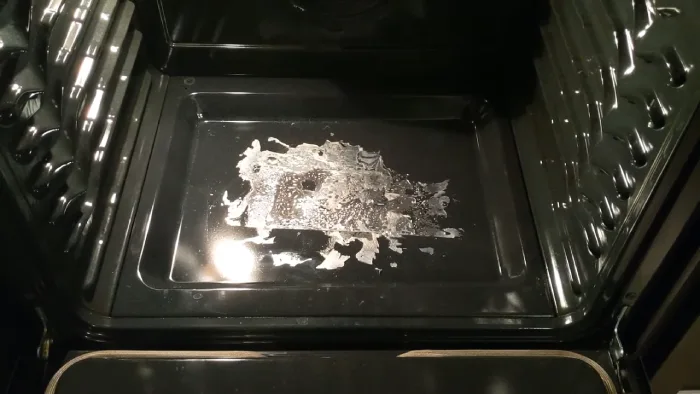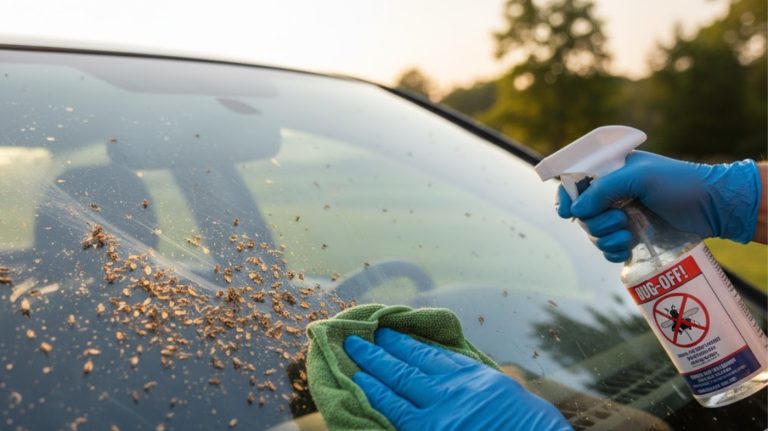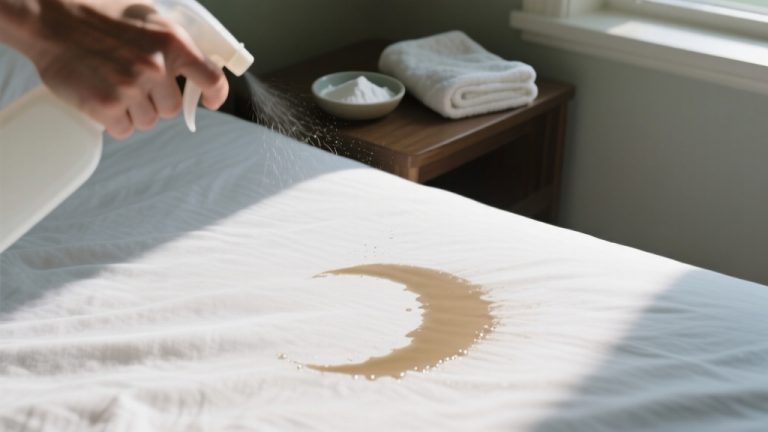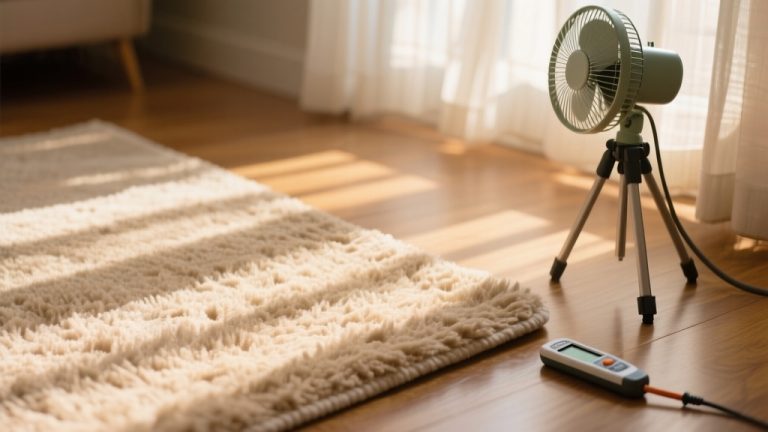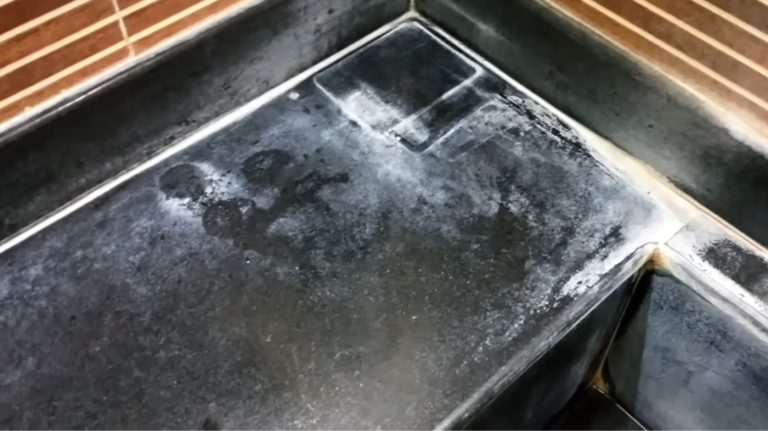How Do I Get Balsamic Vinegar Out of Clothes? Quick Fix Tips
If you get balsamic vinegar on your clothes, act fast. Rinse the stain under cold water from the back to dilute and prevent it from setting.
Blot gently with a mixture of dish soap and white vinegar, then rinse again. Avoid hot water and heat drying until the stain’s gone.
For tougher stains, try baking soda or enzyme-based pre-treatments before washing on a gentle cycle.
Keep following these steps to discover how to safeguard different fabrics and restore your garment’s look.
Key Takeaways
- Rinse the stained area immediately with cold water from the back to dilute the balsamic vinegar and prevent setting.
- Blot the stain gently using a mixture of white vinegar and dish soap, then rinse with a clean damp cloth.
- Sprinkle baking soda or cornstarch on the stain for 15 minutes, then brush off to absorb remaining vinegar.
- Pre-treat with enzyme-based detergent before washing on a gentle cycle using cold water.
- Avoid heat drying; air dry the garment to prevent the stain from setting permanently.
Immediate Steps to Prevent Balsamic Vinegar Stains From Setting
To prevent balsamic vinegar stains from setting, start by rinsing the affected area immediately with cold water.
Hold the fabric under a gentle stream from the back to flush out the vinegar, diluting its acidity and reducing damage risk.
Avoid hot water at this stage, as it can set the stain deeper into fibers. Using appropriate cleaning techniques can enhance stain removal effectiveness.
Next, gently blot the stain using a dry cloth or paper towel, working from the edges toward the center to absorb excess liquid without spreading it.
Repeated blotting helps remove surface vinegar and prepares the fabric for further treatment.
Don’t rely on water alone; if possible, combine rinsing with mild detergent later. Acting promptly minimizes stain setting and potential acid-induced bleaching, ensuring better chances of complete removal. Immediate action helps prevent permanent staining.
Effective Household Remedies for Treating Balsamic Vinegar Stains
Although balsamic vinegar stains can seem stubborn, several effective household remedies can help you tackle them quickly and efficiently.
Start by blotting the stain with a solution of one tablespoon white vinegar and dish soap mixed in two cups warm water. Avoid rubbing to prevent fabric damage.
Use a clean, damp cloth to rinse after blotting to remove any residue and prevent dye transfer. Ensuring good air circulation during this process can help reduce lingering odors and improve stain removal.
For oil absorption, sprinkle baking soda or cornstarch on the stain and let it sit 15 minutes before brushing off.
You can also apply plain white shaving cream, leave it for 15 minutes, then blot and rinse. For tough stains on colorfast fabrics, use diluted hydrogen peroxide, cover with talcum powder, and brush off after an hour.
Finally, enzyme-based stain removers combined with cold water washing are excellent for aged stains, breaking down organic residues effectively without setting the stain. Always test any solution on an inconspicuous area first to avoid damage.
Best Washing Practices to Remove Balsamic Vinegar From Fabrics
When tackling balsamic vinegar stains, selecting the right washing machine settings is essential to prevent the stain from setting permanently.
Use cold water washes and rinses, avoiding heat that can bind pigments to fibers. The acetic acid in balsamic vinegar is water soluble, making early rinsing with cold water especially effective.
Pre-treat stains with enzyme-based detergents and consider oxygen-based bleach alternatives on bleach-safe fabrics.
Always follow fabric care labels and opt for gentle or normal cycles based on fabric durability. Removing stains promptly is crucial, as prolonged exposure can cause fiber damage. Air dry clothes after washing to prevent heat-setting any residual stain.
| Step | Recommendation |
|---|---|
| Water Temperature | Cold wash and rinse |
| Detergent | Enzyme-based laundry detergent |
| Stain Pre-treatment | Apply detergent directly before wash |
| Wash Cycle | Gentle or normal per fabric durability |
| Drying | Air dry; avoid heat until stain gone |
Handling Stains on Different Fabric Types Safely
Choosing the right washing practices sets a solid foundation, but understanding how to handle stains on various fabric types guarantees you won’t cause further damage.
First, identify the fabric: natural fibers like cotton tolerate water and mild soap, while synthetics need gentle treatment to avoid heat damage.
Delicates such as silk or velvet require minimal moisture and no scrubbing. It is important to recognize that balsamic vinegar stains contain water-insoluble tannins, which makes prompt and proper treatment essential to prevent stubborn marks.
Using cold water and avoiding heat during initial treatment helps prevent stain setting and fabric damage.
Second, act quickly by blotting excess vinegar without rubbing to prevent spreading.
Third, tailor your cleaning solution: use mild soap for cotton and polyester, enzyme-based removers for stubborn stains, and seek professional dry cleaning for delicate or vintage items.
Always check care labels before treatment and avoid heat until the stain is fully removed to prevent permanent setting. Employing repeated treatments with soaking and gentle washing cycles can enhance stain removal success.
Tips to Avoid Permanent Damage and Maintain Fabric Quality
To prevent permanent damage and preserve your garment’s quality, act immediately upon noticing a balsamic vinegar stain.
Blot excess liquid with a clean cloth—don’t rub, as that pushes stain deeper. Rinse the area with cold water to stop the stain from setting; avoid hot water and drying before treatment.
Timing is crucial; act immediately upon spotting a balsamic stain to increase the chances of complete removal. Since acidic substances like vinegar can cause discoloration, understanding acidic reactions on fabrics helps in selecting the right cleaning approach.
Use gentle, enzyme-based detergents or a diluted white vinegar solution for pre-treatment. Always test cleaning agents on an inconspicuous spot first. Soak stubborn stains in cold water with oxygen-based bleach if safe for the fabric.
Wash promptly on the gentlest cycle and coldest water recommended. Air dry the garment, as heat from dryers can permanently fix stains.
Monitor the fabric’s color and texture throughout to avoid damage and repeat treatment if needed.
Frequently Asked Questions
Can Balsamic Vinegar Stains Be Removed From Upholstery and Carpets?
Yes, you can remove balsamic vinegar stains from upholstery and carpets. Act quickly by blotting excess liquid with a clean white cloth—avoid rubbing.
Use club soda or a solution of white vinegar, dish soap, and warm water to gently blot the stain.
For carpets, cornstarch helps absorb oils. Always test cleaners on hidden areas first. Persistent stains may need enzyme-based treatments or professional cleaning to fully lift the pigment without damaging fibers.
Is It Safe to Use Oxygen Bleach on Dark-Colored Clothes?
Did you know oxygen bleach is up to 50% less damaging to fabrics than chlorine bleach? You can safely use oxygen bleach on most dark-colored clothes made of cotton or polyester because it doesn’t strip dyes or cause fading. Just avoid delicate fibers like wool or silk.
Always check garment labels, do a spot test first, and follow product instructions carefully to protect your clothes while effectively removing stains.
How Does Acetic Acid in Vinegar Affect Stain Removal?
Acetic acid in vinegar helps you break down stains by lowering pH and disrupting their molecular structure, especially tannins and acids. It acts as a mild acid hydrolyzing agent and chelating agent, making stains more water-soluble for easier removal.
However, you should dilute it on delicate fabrics to prevent damage. Remember, vinegar works best combined with detergents or baking soda and isn’t effective on all stain types alone.
Can Baking Soda Alone Remove Balsamic Vinegar Stains?
Imagine you spill balsamic vinegar on your favorite shirt. Baking soda alone can help by absorbing moisture and some pigment if you act fast.
However, it won’t completely remove deep or dried stains because it lacks the acid needed to break down the stain chemically.
You’ll likely need to apply baking soda paste multiple times and follow up with washing or an acidic treatment like lemon juice for better results.
When Should I Seek Professional Dry Cleaning for Vinegar Stains?
You should seek professional dry cleaning when the vinegar stain is on delicate fabrics like silk, wool, or velvet, or if the stain has set and resisted all home treatments. Persistent stains that don’t respond to enzyme-based detergents or oxygen bleach also need expert care.
Additionally, if your fabric is color-sensitive or you’re unsure about home remedies, professional cleaners can safely remove the stain without damaging your garment.
Act Fast and Smart: Keep Your Clothes Stain-Free Every Time
Act quickly, act carefully, and act confidently to remove balsamic vinegar stains. Treat the stain immediately, use effective household remedies, and follow the best washing practices to protect your fabric.
Handle different materials with care, avoid harsh treatments, and maintain your clothes’ quality. By acting promptly, treating stains properly, and washing correctly, you’ll keep your clothes stain-free and looking their best every time.


